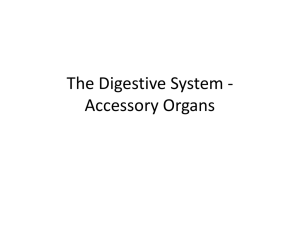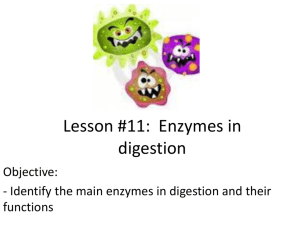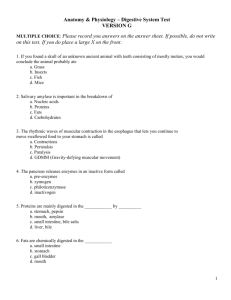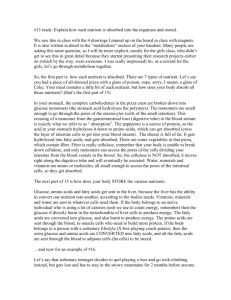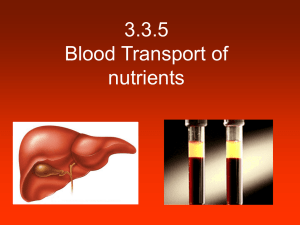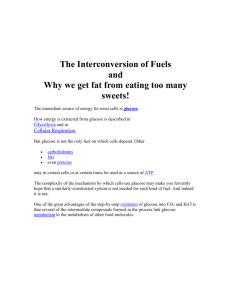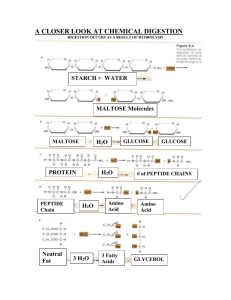11 Digestion
advertisement
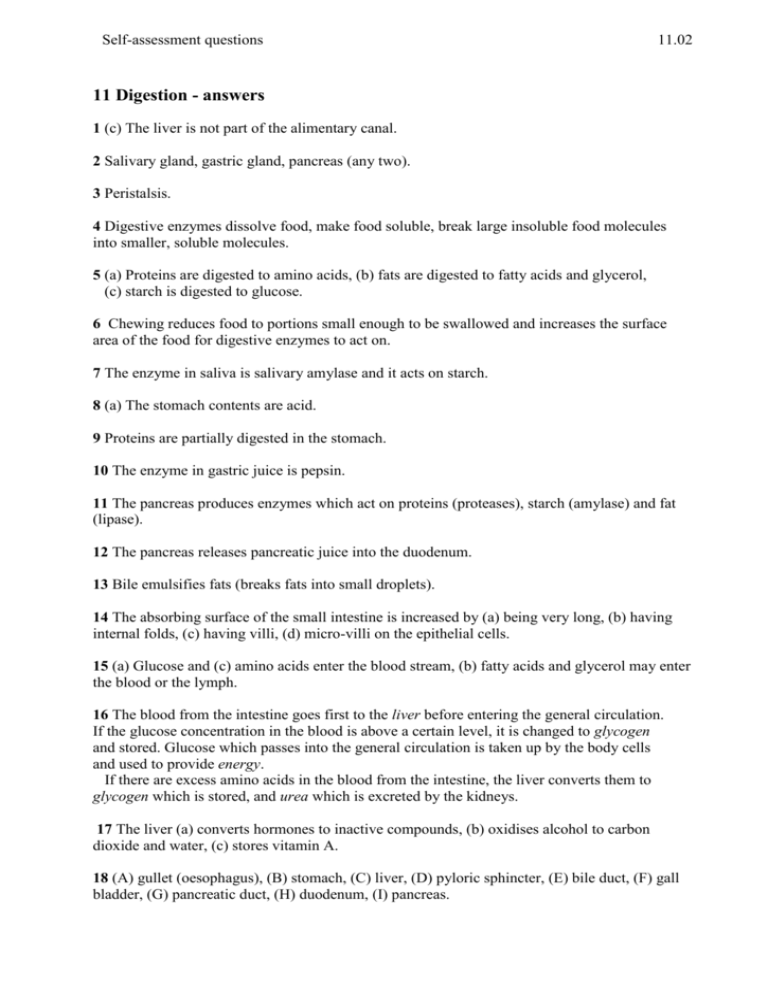
Self-assessment questions 11.02 11 Digestion - answers 1 (c) The liver is not part of the alimentary canal. 2 Salivary gland, gastric gland, pancreas (any two). 3 Peristalsis. 4 Digestive enzymes dissolve food, make food soluble, break large insoluble food molecules into smaller, soluble molecules. 5 (a) Proteins are digested to amino acids, (b) fats are digested to fatty acids and glycerol, (c) starch is digested to glucose. 6 Chewing reduces food to portions small enough to be swallowed and increases the surface area of the food for digestive enzymes to act on. 7 The enzyme in saliva is salivary amylase and it acts on starch. 8 (a) The stomach contents are acid. 9 Proteins are partially digested in the stomach. 10 The enzyme in gastric juice is pepsin. 11 The pancreas produces enzymes which act on proteins (proteases), starch (amylase) and fat (lipase). 12 The pancreas releases pancreatic juice into the duodenum. 13 Bile emulsifies fats (breaks fats into small droplets). 14 The absorbing surface of the small intestine is increased by (a) being very long, (b) having internal folds, (c) having villi, (d) micro-villi on the epithelial cells. 15 (a) Glucose and (c) amino acids enter the blood stream, (b) fatty acids and glycerol may enter the blood or the lymph. 16 The blood from the intestine goes first to the liver before entering the general circulation. If the glucose concentration in the blood is above a certain level, it is changed to glycogen and stored. Glucose which passes into the general circulation is taken up by the body cells and used to provide energy. If there are excess amino acids in the blood from the intestine, the liver converts them to glycogen which is stored, and urea which is excreted by the kidneys. 17 The liver (a) converts hormones to inactive compounds, (b) oxidises alcohol to carbon dioxide and water, (c) stores vitamin A. 18 (A) gullet (oesophagus), (B) stomach, (C) liver, (D) pyloric sphincter, (E) bile duct, (F) gall bladder, (G) pancreatic duct, (H) duodenum, (I) pancreas.

